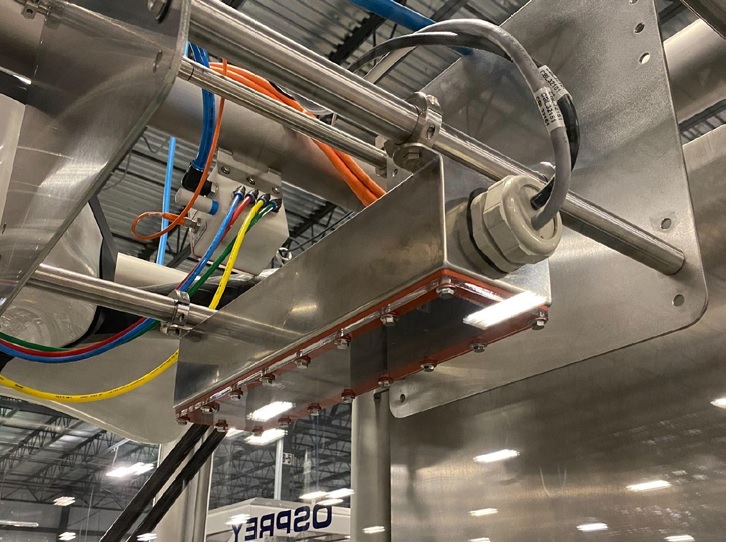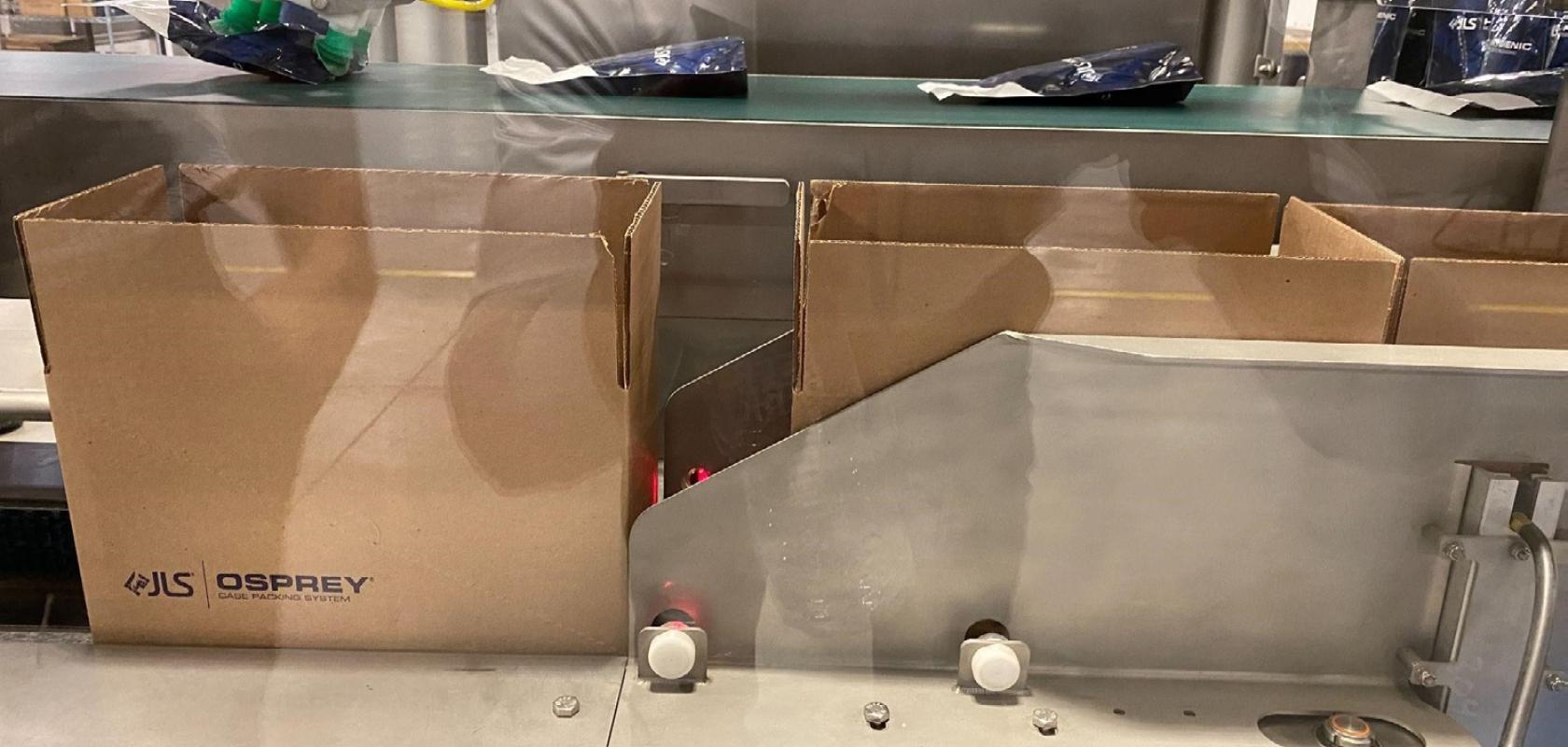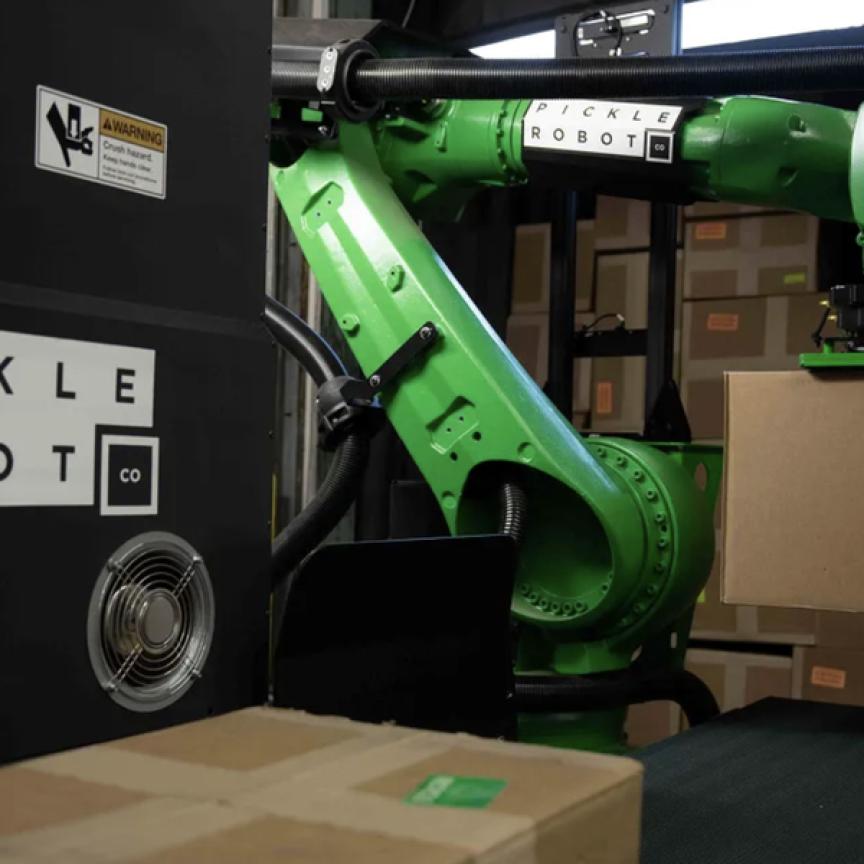JLS Automation supplies simple, easy-to-use hygienic robotic packaging solutions for the food industry that solve complex packaging challenges. Designed for sanitary environments, JLS custom vision-guided primary and secondary robotic packaging systems are user-friendly, easy to operate, fast to start up, and ensure both worker and food safety. The company’s proprietary robotic tooling and high-speed leak detection systems have been awarded several patents. JLS prides itself on offering unrivalled partnership and aftermarket support to its customers.
The packaging application
In this application, JLS vision-guided robotic packaging systems are used for inline product dimensioning and sorting of a wide variety of package sizes and types.
The vision system challenge
JLS has provided vision-guided Osprey case packing systems for many years using conventional 2D vision with smart cameras. The systems perform well, but JLS is always looking to improve its product offering, so it conducted a review of alternative technologies and suppliers in 2021. One of the greatest challenges is the range of package colours that need to be handled by individual systems, and the frequency with which the graphics change.
The 3D vision solution
Implementing 3D vision with LMI Technologies’ Gocator 2170 laser profiler brings a fundamental improvement to JLS’ machines. The identification of packages using 3D height information eliminates the problem of trying to identify a package based solely on 2D intensity data used to distinguish the object’s colour from the background. The 3D geometric information provided by the Gocator 2170 sensor is more robust and prevents potential confusion caused by any variation in the background.
The Gocator 2170 offers fast profiling speeds up to 5kHz and generates high-resolution dimensional data of packages (length, width, height, volume). It also offers high repeatability for reliable measurement over time. The factory pre-calibrated profiler is ready to measure out-of-the box and has an easy web-based interface for maximum ease of use and operations efficiency. In addition, the onboard software with built-in measurement tools means that no third-party software is required.
The result
JLS’ first system shipped to the customer and was commissioned without any issues or even adjustments on-site. The company is also experiencing additional advantages as it implements more Gocator sensors. One of its common systems for chub case packing required change parts to control the background colour, to deal with the wide range of package graphics. This change part is now eliminated. Another system handles stand-up pouches. The profile of these packages obtained with a 2D camera does not provide information on which end of the package is the bottom. The 3D data from the Gocator sensor readily determines this information to ensure that the package is oriented correctly when picked by an industrial robot.

The use of 3D also eliminates the need for external lighting. This provides a cost benefit, and also improves the sanitary design of the machine. Any component that is eliminated is a component which does not require cleaning or inspection.
A final advantage of the 3D technology is that it works in physical units (mm) instead of pixels and avoids the need to compensate for lens distortion and parallax effects. This improves the accuracy of product detection and handling.
Craig Hafner, VP Technology, JLS Automation said: “JLS selected the LMI Gocator sensor to keep us at the forefront of our industry. It provides solid performance, which allows our customers to consistently meet their production requirements.”
Next steps
Due to the success of its Osprey systems, JLS is expanding the use of LMI 3D sensors to Its Talon line of primary product handling systems, including a large sandwich assembly line using eight sensors. The size and shape of the different ingredients varies significantly on this line and will benefit from the height and volume inspections provided by the 3D sensors. JLS is also building a library of common applications that will accelerate system set-up and testing time prior to shipment of equipment.


